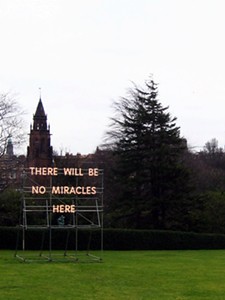 There is a reason why I call myself Karie Bookish - I love books and I love reading. Family lore has it that whenever they couldn't find me I'd be hiding somewhere with a book. I also love knitting. When I was asked to design a number of bookish knits for Knit Now Magazine, I had to pinch myself. What a dream assignment.
There is a reason why I call myself Karie Bookish - I love books and I love reading. Family lore has it that whenever they couldn't find me I'd be hiding somewhere with a book. I also love knitting. When I was asked to design a number of bookish knits for Knit Now Magazine, I had to pinch myself. What a dream assignment.
The first pattern is the Eyre Shawl.
I reread Charlotte Brontë's Jane Eyre in 2011. The novel was extraordinary - far richer than I had grasped when my 14 year-old self had first read it. Jane was a study in self-respect, self-reliance, and intelligence:
“I can live alone, if self-respect, and circumstances require me so to do. I need not sell my soul to buy bliss. I have an inward treasure born with me, which can keep me alive if all extraneous delights should be withheld, or offered only at a price I cannot afford to give.”
But Jane wasn't the only reason why I wanted to design a shawl. The housekeeper at Thornfield Hall - the inimitable Mrs Fairfax - was constantly knitting throughout the novel and kept having small asides about how she really had to finish this row..
The recent film adaptation featured a number of knitted shawls - one spawned several garterstitch shawl patterns on Ravelry - but I wanted to take a different direction. I wanted to design a shawl that was both as delicate and strong as Jane herself - something which Mrs Fairfax would have enjoyed knitting.
My Eyre shawl has an all-over chevron pattern which gently fans into a leaf border. It is very easy to customise: like most of my shawl patterns, Eyre has a design feature which means you can repeat the central chevron stitch pattern as many times as you'd like before starting the border. I like shawls like that because it means you can customise the size of the shawl to suit your yardage.

The sample shown was knitted in Malabrigo Lace in "Applewood". It blocked out beautifully and is wonderfully soft.
I also designed a hat and fingerless gloves set for the magazine.
I set myself the challenge of designing an Art Deco-inspired accessories set which would be accessible for beginner knitters. That means everything is knitted flat. It is a bit of a controversial decision in these Everything Must Be Knitted On Circular Needles times, but I've spent so much time teaching beginning knitters that I understood how frustrating it can be to see a beautiful pattern and not be able to knit because you're not yet confident enough to use double-pointed needles or circs. So, everything is knitted flat.
F. Scott Fitzgerald's The Great Gatsby was my starting point - after all, Baz Luhrmann has an adaptation out later this year and the High Street is already filled with Art Deco inspired clothes. The 1920s silouette was boyish and simple, but the details were everything but. I wanted to capture the lavish and carefree world of Gatsby and I did so by choosing a cashmere-blend yarn and use a glitzy metallic yarn as contrast. Likewise, I decided against designing something practical - this Gatsby set will not keep you warm, but it will make you feel glamorous and feminine.
The set is knitted in Rowan Cashsoft 4ply and Anchor Artiste Metallic in "Thunder" and "Blue" respectively. The hat is photographed as a beanie but is meant to be a very nonchalant beret à la Faye Dunaway in Bonnie & Clyde.

Knit Now Magazine issue 18 will be in stores from Thursday. You can order it online too.
PS. Knit Now has a history of supporting some truly talented indie designers like Jacqui Harding, Anna Elliott, Ella Austin, Elly Doyle, Anni Howard, Woolly Wormhead and Rachel Coopey. Just one reason among many why they are awesome.
 I had told Gabi about how I grew up listening to stories about the Norse pantheon. I may be not be a particularly religious person, but the stories continue to resonate with me. I was rather floored when I saw this image.
I had told Gabi about how I grew up listening to stories about the Norse pantheon. I may be not be a particularly religious person, but the stories continue to resonate with me. I was rather floored when I saw this image.



 There is a reason why I call myself Karie Bookish - I love books and I love reading. Family lore has it that whenever they couldn't find me I'd be hiding somewhere with a book. I also love knitting. When I was asked to design a number of bookish knits for Knit Now Magazine, I had to pinch myself. What a dream assignment.
There is a reason why I call myself Karie Bookish - I love books and I love reading. Family lore has it that whenever they couldn't find me I'd be hiding somewhere with a book. I also love knitting. When I was asked to design a number of bookish knits for Knit Now Magazine, I had to pinch myself. What a dream assignment.



